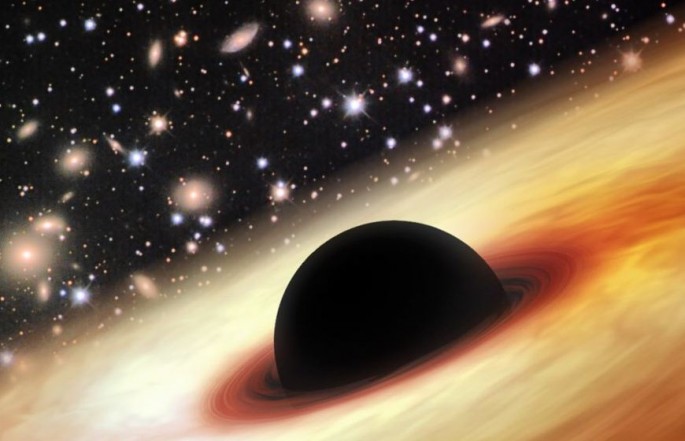The laws of physics say this supermassive black hole shouldn't exist. But this colossal anomaly at the center of quasar SDSS J0100+2802 is there and is raising serious questions about how black holes evolve.
Astronomers say this black hole is 12 billion times more massive or as dense as our Sun and 3,000 times the size of the black hole at the center of our Milky Way galaxy. Comparing this supermassive black hole to the black hole found at the center of the Milky Way shows ours is only 4 to 5 million times as dense as the Sun.
More astounding to astronomers is this black hole appears to have expanded to its supermassive size only 900 million years after the Big Bang, which is too early in the universe's history.
What's bothering astronomers is that current theories say it takes billion of years, and not just 900 million years, for black holes to reach this supermassive size. Astronomers say there are theoretical limits on how fast black holes can grow.
These anomalous results are raising serious questions about how black holes evolve, said a story in The Huffington Post.
"The discovery of this record-breaking monster black hole ... raises an embarrassing unanswered question: how did it form?" said Dr. Max Tegmark, an MIT cosmologist who was not involved in the discovery.
"If it started out as a collapsing star, then this black hole ate about a billion times its birth weight to get this heavy: how did it manage to eat so much in so little time?"
The black hole lies at the center of a quasar called SDSS J0100+2802 located 12.8 billion light-years from Earth. The quasar is 420 trillion times brighter than our Sun.
The original report in the journal Nature said the "evolution of galaxies is connected to the growth of supermassive black holes in their centers. During the quasar phase, a huge luminosity is released as matter falls onto the black hole, and radiation-driven winds can transfer most of this energy back to the host galaxy.
"Over five different epochs, we detected the signatures of a nearly spherical stream of highly ionized gas in the broadband x-ray spectra of the luminous quasar PDS 456".
The report said this supermassive blackhole "outflow's kinetic power larger than 1046 ergs per second is enough to provide the feedback required by models of black hole and host galaxy coevolution".
Study lead researcher Xue-Bing Wu from the Peking University in Beijing said this black hole's supermassive size could only mean this black hole developed in a very unique process over a short period of time. He theorizes this black hole could even be a huge "seed black hole," which is supposed to be the birth place of all black holes when the first generation of stars and galaxies were formed.
Other astronomers believe this particular black hole could also have been formed by two massive black holes that collided into each other during the early stages of the Universe.



























